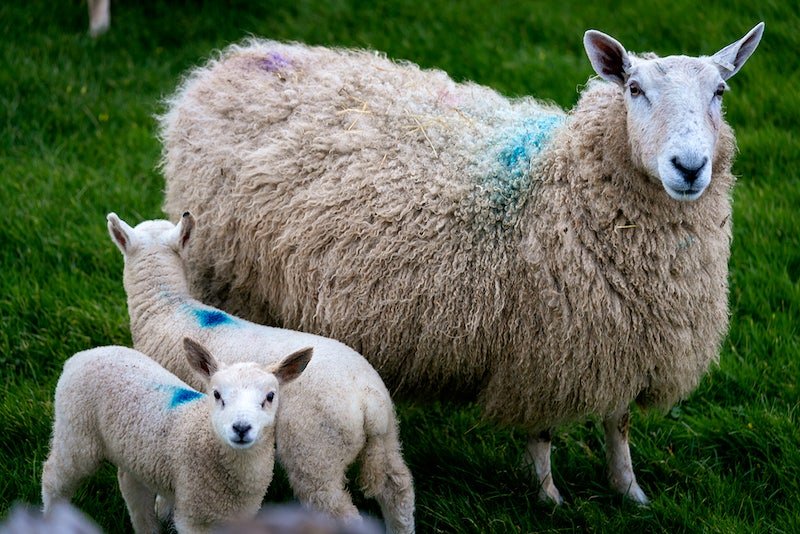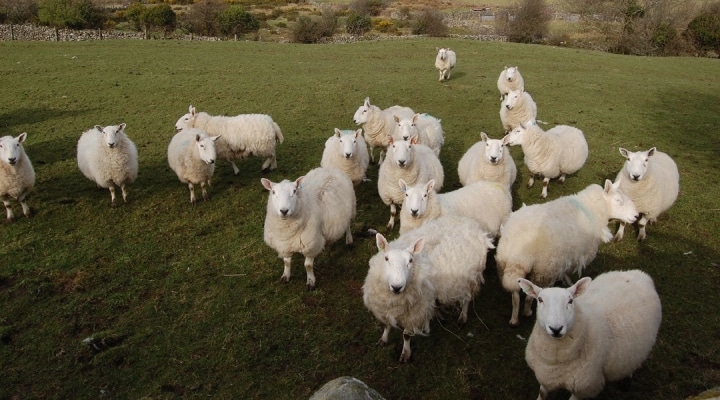What Is The Of Cheviot Sheep Economic Inventory? Analysis!
March 21, 2025 | by samayyashafique8@gmail.com

Cheviot sheep, known for their hardiness, adaptability, and dual-purpose nature, play an essential role in the agricultural economy. But what is the Cheviot sheep economic inventory? In simple terms, it refers to their economic value based on population, market demand, and production potential for meat and wool.
Cheviot sheep originated in the Cheviot Hills between England and Scotland, where they developed resistance to harsh climates. Over the years, their presence in the U.S. agricultural sector has grown due to their ability to thrive in diverse environments.
In this article, we explore the economic impact of Cheviot sheep, covering their meat and wool production, adaptability, market trends, and challenges within the industry.
What is the Economic Inventory of Cheviot Sheep?

The economic inventory of Cheviot sheep refers to their overall contribution to the livestock industry in terms of:
- Meat production (supply, demand, and market value)
- Wool production (quality, pricing, and global market trends)
- Adaptability and maintenance costs
- Genetic diversity and cross breeding opportunities
Understanding these factors helps farmers and investors determine the profitability and sustainability of Cheviot sheep in modern agriculture.
Cheviot Sheep Economic Value – Overview!
| Aspect | Details | Economic Impact |
| Meat Production | Lean, fast-growing lambs. | High demand, profitable. |
| Wool Production | Medium-quality wool. | Steady market value. |
| Adaptability | Thrives in tough climates. | Low farming costs. |
| Genetic Diversity | Strong cross breeding traits. | Improves resilience. |
| Market Demand | Sought-after for quality. | Expanding niche markets. |
| Export Potential | Global wool & lamb trade. | Increases revenue streams. |
| Challenges | Competition from other breeds. | Requires strategic breeding. |
| Opportunities | Tech & subsidies in farming. | Boosts productivity. |
The Role of Cheviot Sheep in Meat Production
High-Quality Lean Meat
Cheviot sheep produce lean, tender, and flavorful meat, making them highly sought after in the U.S. lamb market. Their lambs mature quickly, allowing farmers to maximize profitability with shorter production cycles.
Market Demand for Cheviot Lamb
The demand for premium lamb meat has increased, particularly among health-conscious consumers and gourmet restaurants. This has led to a steady rise in market value for Cheviot sheep.
Economic Contribution
According to the USDA (nass.usda.gov), the U.S. sheep industry contributes billions of dollars annually. Cheviot sheep represent a significant portion of this revenue, particularly in niche and specialty meat markets.
Wool Production and Its Economic Impact

Medium-Quality Wool
Cheviot sheep produce medium-grade wool, making it ideal for durable textiles like tweed, blankets, and upholstery. While it’s not as fine as Merino wool, it offers versatility and durability.
Wool Pricing and Global Market
The price of Cheviot wool depends on fiber quality, global demand, and processing costs. In recent years, sustainable and ethically sourced wool products have increased in value, benefitting small-scale Cheviot sheep farmers.
Wool’s Role in Economic Inventory
Wool production enhances the dual-purpose value of Cheviot sheep, ensuring farmers gain profit from both meat and fleece sales.
Adaptability: A Cost-Effective Advantage

Survival in Harsh Climates
Cheviot sheep thrive in various climates, from humid regions to dry landscapes, reducing the need for high-maintenance farming practices.
Lower Farming Costs
Due to their natural resistance to diseases and ability to graze efficiently, Cheviot sheep require less medical intervention and supplemental feeding, making them a cost-effective choice for livestock farmers.
Impact on Economic Inventory
Their low-maintenance nature reduces overhead costs for farmers, increasing profit margins and overall economic viability.
Genetic Diversity and Crossbreeding Value
Why is Genetic Diversity Important?
Maintaining a diverse gene pool in livestock breeds ensures stronger, disease-resistant, and productive animals.
Cheviots in Crossbreeding Programs
Cheviot sheep are often crossbred with other breeds to enhance meat quality, wool texture, and adaptability. Their genetic resilience benefits farmers by improving hybrid vigor in mixed-breed sheep.
Market Demand for Cheviot Sheep Products
Growing Demand for Sustainable Farming
Consumers are increasingly interested in sustainable and locally sourced products, which has positively impacted the demand for Cheviot meat and wool.
Export Potential
The U.S. sheep industry exports wool and meat to countries like China, Canada, and the European Union, opening international market opportunities for Cheviot sheep farmers.
Challenges in the Cheviot Sheep Industry

Competition from Other Breeds
Despite their benefits, Cheviot sheep face competition from high-yielding breeds like Merino (for wool) and Dorper (for meat).
Fluctuating Market Prices
Like all livestock, meat and wool prices fluctuate based on factors like climate conditions, demand shifts, and economic trends.
Labor Shortages in Sheep Farming
The decline in skilled labor for sheep farming has led to increased operational costs and management difficulties for large-scale Cheviot sheep farms.
Opportunities for Growth
Niche Market Expansion
Organic, grass-fed lamb and eco-friendly wool products present lucrative opportunities for Cheviot sheep farmers.
Government Support and Subsidies
In the U.S., the government provides grants and subsidies for sustainable livestock farming, helping farmers expand Cheviot sheep operations.
Technological Advancements in Sheep Farming
Modern innovations such as automated feeding systems, health monitoring apps, and genetic testing help increase Cheviot sheep productivity and profitability.
FAQs
What makes Cheviot sheep economically valuable?
Their ability to produce lean meat and durable wool, coupled with low-maintenance farming costs, makes them profitable for livestock farmers.
How much wool does a Cheviot sheep produce annually?
On average, a Cheviot sheep produces 4-6 lbs of wool per year, depending on diet and environmental conditions.
What are the biggest challenges in Cheviot sheep farming?
Competition from other breeds, fluctuating market prices, and labor shortages are key challenges.
How can farmers increase the profitability of Cheviot sheep?
Farmers can explore niche markets like organic lamb production and sustainable wool textiles for higher profits.
Conclusion
Cheviot sheep remain a valuable breed in the U.S. agricultural sector, offering economic benefits through meat and wool production, adaptability, and genetic diversity.
Understanding what is the of Cheviot sheep economic inventory allows farmers, investors, and industry professionals to make informed decisions regarding their role in modern agriculture.
As consumer demand for sustainable products grows, Cheviot sheep farming offers a profitable and environmentally friendly investment.
RELATED POSTS
View all


